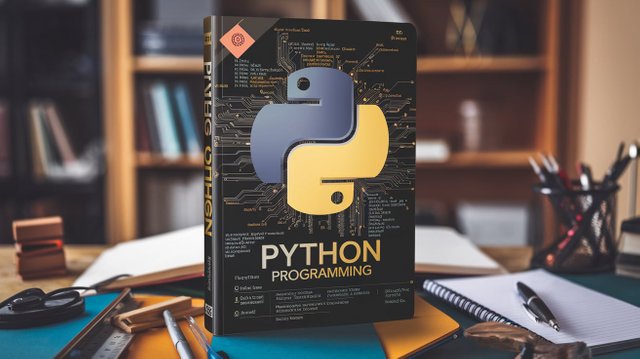Introduction to Python Programming

Introduction to Python Programming - University of Cambridge - 2025
Introduction
Python has quickly become one of the most popular programming languages due to its simplicity and versatility. Used in a variety of applications, from web development to data analysis and artificial intelligence, Python's easy-to-read syntax makes it a perfect choice for beginners and professionals alike. This guide aims to introduce the fundamental concepts of Python programming, making it a comprehensive resource for new learners.
Why Python?
Python stands out for several reasons:
- Easy to Learn: Its simple syntax mimics natural language, making it accessible even to those with no programming background.
- Versatile: Python can be used for web development, machine learning, data analysis, automation, and more.
- Large Community Support: Being open-source and widely used, there are countless tutorials, forums, and libraries available to help learners.
- Cross-Platform Compatibility: Python works on Windows, macOS, Linux, and more, allowing developers to use it in various environments.
Setting Up Python
Before writing your first Python program, you need to install the language on your computer. Here’s how to get started:
- Install Python: Visit the official Python website and download the latest version.
- Choose an IDE: Integrated Development Environments (IDEs) like PyCharm, VS Code, or Jupyter Notebook can help streamline the coding process.
- Verify the Installation: Open a command prompt or terminal and type
python --versionto ensure Python is installed correctly.
Writing Your First Python Program
Let’s dive straight into writing a simple Python program. The classic first step is to create a "Hello, World!" program.
print("Hello, World!")
Here’s how it works:
print()is a built-in function in Python used to display output on the screen.- The text within the parentheses is the string that will be printed.
Key Concepts in Python
- Variables and Data Types
Variables store data values in a program. In Python, you don't need to declare a variable’s type explicitly; the interpreter infers it automatically.
name = "Alice" # String
age = 21 # Integer
is_student = True # Boolean
Python supports several data types, including integers, floats, strings, booleans, lists, tuples, dictionaries, and sets.
- Conditional Statements
Python supports if-else statements to make decisions in your programs.
if age >= 18:
print("You are an adult.")
else:
print("You are a minor.")
Here, the program checks if age is greater than or equal to 18. If true, it prints the first message, otherwise the second.
3. Loops
Loops allow you to repeat a block of code multiple times. Python offers two main types of loops: for and while.
# For loop example
for i in range(5):
print(i)
# While loop example
count = 0
while count < 5:
print(count)
count += 1
4. Functions
Functions allow you to organize your code into reusable blocks. In Python, functions are defined using the def keyword.
def greet(name):
return "Hello, " + name
print(greet("Alice"))
- Lists and Dictionaries
Lists store multiple items in a single variable, and dictionaries store data in key-value pairs.
# List
fruits = ["apple", "banana", "cherry"]
# Dictionary
student = {"name": "Alice", "age": 21}
Python Libraries
One of Python's greatest strengths is its vast array of libraries. Here are some of the most popular ones:
- NumPy: Used for numerical operations and working with arrays.
- Pandas: Excellent for data analysis and manipulation.
- Matplotlib: A plotting library for creating static, animated, and interactive visualizations.
- Flask/Django: Web frameworks for developing web applications.
Error Handling
Errors in Python are handled using try and except blocks. This allows your program to continue running even if an error occurs.
try:
result = 10 / 0
except ZeroDivisionError:
print("You cannot divide by zero!")
Conclusion
Python's simplicity and flexibility make it an excellent language for both beginners and professionals. With strong community support and a growing number of libraries, Python will continue to be a valuable skill in the modern technological landscape. Whether you’re interested in web development, data science, or artificial intelligence, Python is a great starting point for your programming journey.
Keywords: Python Programming, Introduction to Python, Variables, Loops, Functions, Python Libraries, Web Development, Data Science, Python Basics, University of Cambridge 2024, Learn Python, Beginner Python,